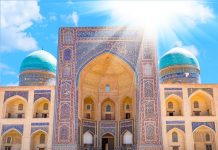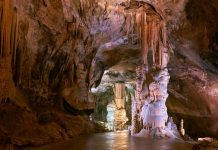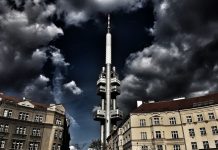Croatia – an amazing country, which is a real historical value, because its territory remained a huge number of ancient monuments, architectural buildings and museums.
Traveling in Croatia, be sure to make a trip to Dubrovnik, which is the number of excellent surviving monuments of the Renaissance (walls and towers, public buildings, churches, houses and palaces) can be compared to Europe, only to Venice or Amsterdam.
In such a small country as Croatia, there are so many monuments of world significance: GAD (The Renaissance), the cathedral in Sibenik (Juraj Dalmatinats, XV century, the only European cathedral, built of stone slabs), a chapel in Trogir (Nicola Firentinats, XV century, has a total of 150 sculptures and bas-relief image of a human face), about eighty original summer residences of the nobility, built in the Renaissance in the Republic of Dubrovnik (XVI cent.) etc.
On the territory of Croatia are 7 amazing national parks. Three of them are located on coastal islands: Brijuni near Pula, Zadar and Kornati near Mljet near Korcula. Roman antiquity especially felt in Pula (well-preserved amphitheater, arch Sergievatsa and the Temple of Augustus) and Split (Diokletsianov monumental palace, IV century).
In Porec, there are many churches, the most famous of which is the Basilica of St. Efraziusa, which is in the list of world treasures by UNESCO and has a surprisingly beautiful Byzantine mosaics, Porec has brought worldwide fame. Porec is the most visited tourist attraction of Croatia thanks to the excellent infrastructure, an amazing natural beauty and excellent opportunities for recreation.
In Zagreb, be sure to visit the pedestrian street of Ivan Zakmardiya that will lead to the funicular (1888), which connects the upper and lower parts of the city and the tower Lotrscak, from a viewing platform which offers a beautiful view over the city. A few blocks to the east lie the Baroque church of St. Catherine, most prestigious exhibition hall of the city – Muzeyski space, and slightly to the north, at the intersection of Kamenita and Opalichka, stone gate (XIII century., Miraculously survived a fire in 1731) with the image Virgin Mary.
Centre Kaptol is St. Stephen’s Cathedral, constructed in 1899 on the site, and using some of the elements destroyed by an earthquake in 1880, the medieval cathedral. Be sure to visit the nearby Baroque Palace of the Archbishop served as a fortress defending against raids by the Turks, a central area of Josip Jelačić with its monuments, Arcade Mirogoj cemetery – one of the most beautiful cemeteries in Europe, as well as the picturesque market Dolach and Comedy Theatre. Founded in the XVII century. University of Zagreb is one of the oldest, and its building – one of the most beautiful in Europe.












